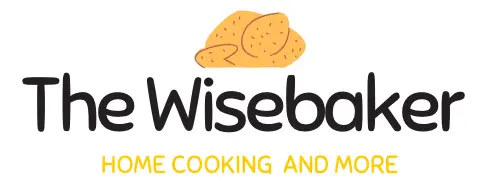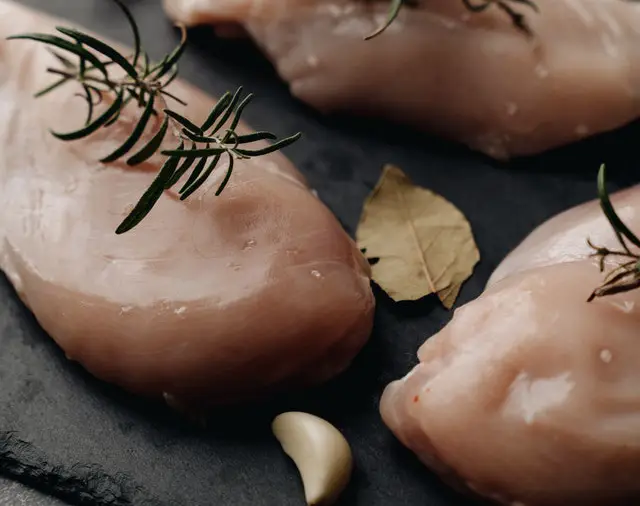Everybody’s special way of making chicken breasts is to always start out with room temperature chicken, or at least, with chicken breasts that have most recently been stored in the refrigerator.
We absolutely love the juicy and tender results we get from marinating such breasts, and when it comes to flavor, there’s not a single sentence that can express the goodness packed from within.
But there’s one caveat to this method: the warm chicken breasts! They’re not always available on a 24/7/360 basis. Add this to an emergency situation (a well respected guest arriving out of no where) and we’ve got ourselves a full-fledged chicken anxiety!
(That’s if chicken is the only way you know how to impress your guests!)
But a frozen chicken breasts should never be the cause for anyone’s anxiety, and you’ll find out why in the next few paragraphs!
Can you cook chicken breast from frozen?
Yes, you can cook chicken breast from frozen state, but it’s recommended that you do so by either boiling or baking. Any other method, and the risks of overcooking and undercooking shoots up dramatically. Not to mention the health risks associated with slow cooking!
Chicken breasts cooked from the frozen state normally take longer to reach optimal doneness as opposed to when room temperature breasts are used.
This is understandable because of the extra work done to increase the temperature first before the main cooking actually begins.
The United States Department of Agriculture (USDA) advises that the cooking temperature of any recipe incorporating chicken breast be increased by up to 50% if frozen pieces are used.
It could go up even more depending on many factors such as the size of the breast, the nature of the pan, the size of the pot, the quality of the stovetop and many more!
Matching or surpassing this cooking time will ensure that the breasts are fully cooked through to an internal temperature of 165 F or more, which is considered safe for eating.
How to cook chicken breast from frozen state
Cooking chicken breast directly from the frozen sate is not advisable on the grill primarily because of the risk of overcooking.
The high and direct heat from the grill makes the exterior of the breast alongside other surrounding portions reach optimal temperature much faster than the core and its surrounding portions, and before the interior fully cooks to that degree of doneness, the outer portions must have leaked enough juice that they’re now left completely dry!
Adding to that, chicken breasts are hardly ever going to be of the same thickness everywhere.
And because there’s no way to fully level the breasts (like we do with room temperature chickens) before cooking them on the grill, (except of course, you did this right before freezing and took practical measures to have their shapes maintained), there’s definitely going to be some serious overcooking on the lean side before the thicker sides get done completely.
If anything, you should know that a chicken breast (or chicken in general) is the very last thing you want to overcook because it gets really dry, chewy and very boring to enjoy no matter how much sauce you spatter on it.
On a slow cooker, cooking frozen chicken breast is not advisable simply because of the slow medium cooking which is nothing but a recipe for disaster.
The bacteria within the chicken can easily multiply to double their numbers as it warms up slowly in the cooker. Even though these bacteria would end up getting squashed and killed by the time the cooker is fully done, the risk of infections is still there and slightly higher than normal as a result of the multiplication.
Next on the list of methods prohibited for cooking frozen chicken breasts is frying or anything that looks like it; sauté.
It’ll deliver the same results as grilling but with an additional caveat; the hot oil will quickly melt the layer of frozen water covering the surface of the chicken and end up making sizzles that’ll jump out of the pan all the way to your skin, if not to delicate areas like your eyes. If you don’t already know what that spells, it’s serious damage or burns!
And lastly, as a general downside to discourage you from cooking chicken breasts directly from the frozen state (except you’re at the tip of a needle: in an emergency situation), you can never get the amazing flavors like you would with room temperature chickens.
Why? Because you won’t brine or marinate! These add levels of dimension in flavor, texture and enjoyment that the normal chicken juice can never add, or the laughable sprinkle of salt that slides right off the icy surface of the chicken could. If you’re severing the chicken with a hot sauce, you might be safe, but you’re still not locked in completely for enjoyment!
If you’re not under emergency, and you’re planning on cooking chicken breast directly from the frozen state, it only prompts me to suggest that you actually don’t know how to properly cook chicken breasts for flavor and texture.
Here’s a few sentence schooling that sums up the tutorial!
“You need a chicken breast that has been soaked in a brine solution and popped in the refrigerator for more than 2 hours! This means that you’re breaking a critical rule by opting to cook chicken right from their frozen coats! Plus, making chicken like this is actually the key to enjoying a memorable piece! It’s juicy, tender and most importantly, very flavorful.”
If for emergency reasons however, you’re not able to thaw a frozen chicken breast beforehand, here’s how to use whatever frozen state chicken you have for different kinds of cooking!
1) Boiling (Recommended by the USDA):
Boil frozen chicken breast in a pot of water, in chicken broth, or using any other flavorful liquids you know should work well on a stove top. Broth pulls out life from any “numb” chicken breast, so you might want to consider making one! Or use a store-bought one if you have (i hate that!).
Typically, boiling one 6 to 8 oz boneless chicken breasts (at room temperature) should take no more than 15 minutes in 1 cup of broth, but for a frozen piece, it should take an extra 7.5 minutes or more to get done. For a bone-in chicken breast, the same amount of chicken can take up to 30 minutes (at room temperature), but will need to boil for additional 15 minutes or slightly more to register a 165 F internal temperature at the core.
Here’s how to properly boil chicken breast (recipe for 4 boneless chicken breast)
Step 1: Bring 4 cups of chicken broth (for 4 chicken breast) to a boil on a stove top using high heat. You can use other richer liquids i.e. water plus one table spoon of melted butter or use a stock cube in one cup of boiling water. You can additionally include onion wedges, diced carrots, garlic, herbs and other ingredients you know should work well to boost flavor.
Step 2: Reduce heat to medium, add breasts and then simmer for cooking time described above, or until the internal temperature of the chicken registers 165 F or more. The texture should be soft at that point and the chicken should no longer be pink inside.
Tip:
- You can boil chickens even faster by cutting them into small pieces, culets, tenders, or quarters. Simple reduce the cooking time by 3 to 4 minutes and work from there. If you’re using larger than regular sized breasts, cook for additional two to three minutes and work from there.
2) Oven Baking and roasting (Recommended by the USDA)
Frozen chicken breasts should take between 27 to 30 minutes to fully cook through at 425 F in the oven. A breast at room temperature takes half of that cooking time to fully cook. Don’t forget to season. Sauce during the last 10 to 15 minutes of cooking time (if you like)! It’s generally advised though to cook frozen chickens at the next lower temperature while still using the 50 percent rule. This would ensure that you reduce any possibilities of undercooking and overcooking by a boost margin. While doing so, you might need to adjust the cooking time a little bit – roughly by 5 to 10 minutes.
Here is a simple frozen chicken oven recipe:
- Heat oven to 350 F
- Arrange breasts on a pan, with enough room for individual piece to breath
- Brush breasts with melted butter and season with pepper and salt.
- Bake for 30 to 45 minutes.
- Check if internal temperature is 165 F or more. If not, cook for additional 5 to 10 minutes.
- Take chicken from the oven, rest for 15 minutes, and then serve.
3) Air frying
A regular sized chicken breast cooks to doneness in under 20 minutes in an air fryer; that’s 9 to 10 minutes per side. For frozen chicken breast, cook them for 12 to 15 minutes per side, seasoned side down first. If you have smaller than normal chicken breasts cook them for 2 to 4 minutes less the time, and if you have slightly larger than normal (i.e. 10 to 12 oz.), add extra four minutes to the cooking time.
4) Pressure cooker
4 regular boneless chicken breasts should get done in about 8 to 10 minutes in a pressure cooker in 1 ½ broth, that’s minus the 10 minutes pressure building time and 10 minutes pressure release time (oh the pressure ******* cooker!). For frozen chicken breasts, add 4 to 5 extra minutes and cook from there.
4 to 6 regular bone-in chicken breasts, should get done in 40 minutes or slightly more time. Smaller breasts should take less time and larger breasts should take up to 1 hour or slightly more time.
How to properly defrost chicken breast (when you’ve changed your mind)
Want to defrost your chicken breasts and follow the conventional cooking method?
Here is how to do it.
In the refrigerator: Transfer breasts from the freezer to the lowest drawer of the refrigerator at least a day before. Make sure that the temperature of the refrigerator registers 40 F or less to prevent bacterial growth.
In cold water: Soak chicken breasts in cold water (preferable 60 F or lower) in an air-tight, leak-proof and waterproof packaging. The water should be replaced every thirty minutes so that it stays cold. Complete thawing should take place in less than an hour. Cook immediately after thawing.
The microwave is an option too, but don’t use it.
Can you cook refrigerated chicken breasts?
Yes, you can cook refrigerated chicken breast. The difference in the final cooking time should be no more than a minute or two. If you want, you can always leave it on the counter for no more than 15 minutes to raise the temperature to near room temperature. This will make it as close to as possible to matching any recipe cooking time.


